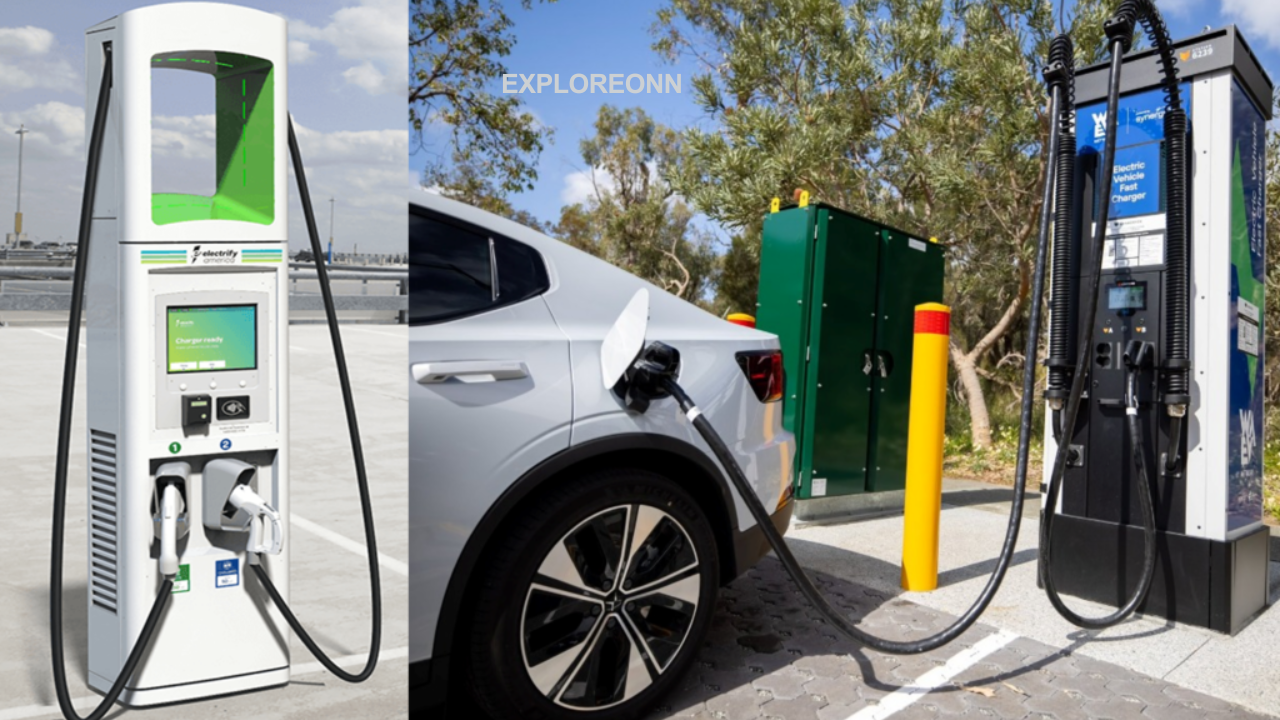Electric vehicles (EVs) are rapidly transforming the way we think about transportation. With their eco-friendly nature, reduced operating costs, and technological advancements, EVs are becoming an increasingly popular choice among consumers. However, for many beginners, the concept of EV charging stations can seem daunting and complex. This guide aims to simplify the topic and provide a comprehensive understanding of EV charging stations, their types, functionalities, and practical tips for EV owners.
What Are EV Charging Stations?
EV charging stations, also known as electric vehicle supply equipment (EVSE), are infrastructure systems designed to charge the batteries of electric vehicles. They act as the bridge between the power grid and the EV, converting electricity from the grid into a form that can be stored in the vehicle’s battery. Charging stations vary in design, capacity, and speed, catering to different types of EVs and user needs.
Why Are EV Charging Stations Important?
- Facilitating EV Adoption: One of the key barriers to EV adoption is the fear of running out of battery, also known as range anxiety. A robust network of EV charging stations helps alleviate this concern.
- Reducing Carbon Emissions: By providing the infrastructure for EVs, charging stations play a crucial role in reducing greenhouse gas emissions compared to internal combustion engine vehicles.
- Convenience for EV Owners: With charging stations available at homes, workplaces, and public spaces, EV owners have the flexibility to charge their vehicles at their convenience.
Types of EV Charging Stations
EV charging stations are classified into three main levels based on their charging speed and power output:
- Level 1 Charging
- Power Output: 120 volts (standard household outlet).
- Charging Speed: Adds 3-5 miles of range per hour.
- Ideal For: Home use and overnight charging.
- Pros: Requires no special installation and is cost-effective.
- Cons: Slow charging speed makes it unsuitable for long trips or quick top-ups.
- Level 2 Charging
- Power Output: 240 volts (requires a dedicated circuit).
- Charging Speed: Adds 15-25 miles of range per hour.
- Ideal For: Homes, workplaces, and public charging stations.
- Pros: Faster charging than Level 1 and widely available.
- Cons: Requires professional installation and higher upfront costs.
- DC Fast Charging (Level 3)
- Power Output: 50-350 kW.
- Charging Speed: Adds 100-200 miles of range in 30 minutes.
- Ideal For: Highways and public charging stations.
- Pros: Extremely fast charging for long-distance travel.
- Cons: Expensive to install and may degrade battery health if used frequently.
Charging Connectors and Standards
Different EV manufacturers use different charging connectors and standards. It’s important for EV owners to understand these to ensure compatibility with charging stations.
- CHAdeMO
- Common in Japanese EVs like Nissan Leaf.
- Supports DC fast charging.
- CCS (Combined Charging System)
- Popular in Europe and North America.
- Supports both AC and DC charging.
- Tesla Connector
- Exclusive to Tesla vehicles.
- Tesla Superchargers are the fastest charging option for Tesla EVs.
- Type 1 and Type 2 (AC Charging)
- Type 1 is common in North America, while Type 2 is prevalent in Europe.
- Used for Level 1 and Level 2 charging.
How to Use an EV Charging Station
- Locate a Charging Station: Use apps like PlugShare, ChargePoint, or Tesla’s in-car navigation to find nearby charging stations.
- Check Compatibility: Ensure the station’s connector type matches your EV’s port.
- Plug In: Follow the station’s instructions to connect your vehicle.
- Start Charging: Use a mobile app, RFID card, or payment system to initiate charging.
- Monitor Charging: Keep track of charging progress through your EV’s dashboard or mobile app.
- Unplug: Once fully charged, unplug and secure the cable.
Charging at Home vs. Public Stations
Home Charging
- Most EV owners prefer home charging for its convenience and lower cost.
- Installing a Level 2 charger at home can significantly reduce charging time.
- Nighttime charging takes advantage of off-peak electricity rates.
Public Charging Stations
- Ideal for long trips or when home charging isn’t feasible.
- Some stations are free, while others charge per kWh or minute.
- Networks like ChargePoint, Electrify America, and EVgo offer membership plans for frequent users.

Costs of EV Charging
The cost of charging an EV depends on factors like electricity rates, charging station fees, and your vehicle’s battery capacity. Here’s a breakdown:
- Home Charging
- Average Cost: $0.10-$0.15 per kWh.
- Charging a 60 kWh battery from 0% to 100% costs around $6-$9.
- Public Charging
- Pricing Models: Per kWh, per minute, or flat fee.
- DC fast charging is usually more expensive than Level 2 charging.
- Subscription Plans
- Some networks offer unlimited charging plans for a fixed monthly fee.
Factors Affecting Charging Speed
Several factors influence how quickly your EV charges:
- Battery Capacity: Larger batteries take longer to charge.
- State of Charge (SoC): Charging slows down as the battery approaches full capacity.
- Temperature: Extreme cold or heat can impact charging efficiency.
- Charger Power Output: Higher output chargers deliver faster charging.
- Vehicle’s Onboard Charger: Limits the maximum power the battery can accept.
Future of EV Charging Stations
The EV charging industry is evolving rapidly to meet the growing demand for electric vehicles. Here are some key trends:

- Ultra-Fast Charging
- Stations with power outputs of 350 kW or more are being deployed to reduce charging times to under 20 minutes.
- Wireless Charging
- Inductive charging technology allows vehicles to charge without plugging in, offering greater convenience.
- Renewable Energy Integration
- Charging stations powered by solar or wind energy contribute to a greener ecosystem.
- Vehicle-to-Grid (V2G) Technology
- Allows EVs to supply energy back to the grid, enhancing grid stability and offering financial incentives to EV owners.
- Expanded Networks
- Governments and private companies are investing in charging infrastructure to build extensive networks that cover urban and rural areas.
Tips for Beginners
- Plan Ahead: Know where charging stations are located along your route.
- Carry an Adapter: If your EV supports it, carry an adapter to use different types of charging stations.
- Monitor Battery Levels: Avoid letting your battery level drop too low to reduce stress.
- Optimize Charging Times: Charge during off-peak hours to save on electricity costs.
- Understand Your Vehicle’s Limits: Familiarize yourself with your EV’s charging capabilities and range.
Understanding EV charging stations is a crucial step in transitioning to electric vehicle ownership. By familiarizing yourself with the different types of chargers, connectors, and costs, you can make informed decisions and enjoy a seamless EV experience. As technology continues to advance, charging stations are becoming faster, more accessible, and integrated with renewable energy, making the shift to electric mobility an exciting and sustainable choice for the future.




